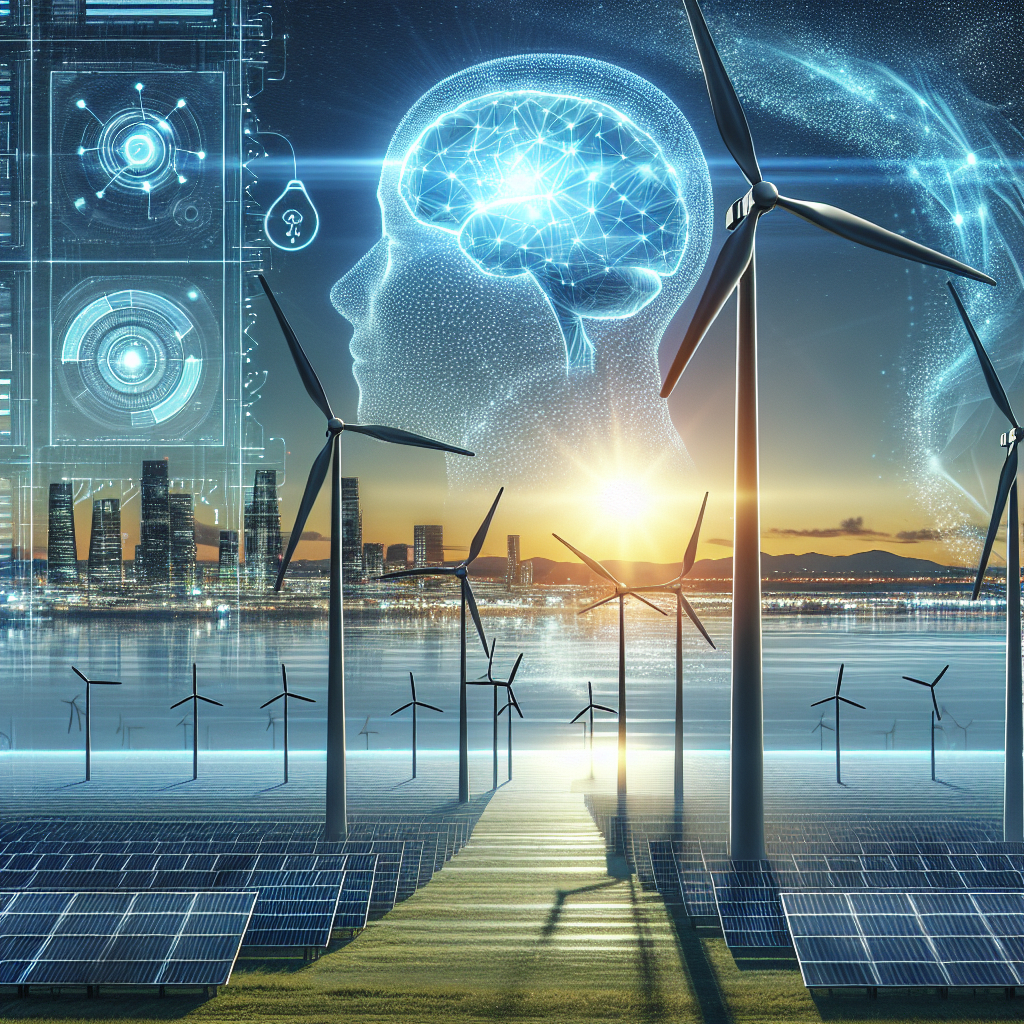The Future of Renewable Energy: AI and Machine Learning
In recent years, there has been a growing interest in renewable energy sources as a way to combat climate change and reduce our dependence on fossil fuels. Advances in technology, particularly in the fields of artificial intelligence (AI) and machine learning, are playing a crucial role in the development and optimization of renewable energy systems. These technologies are being used to improve the efficiency, reliability, and cost-effectiveness of renewable energy sources, making them an increasingly attractive option for governments, businesses, and individuals around the world.
AI and machine learning are revolutionizing the way we generate, store, and distribute renewable energy. These technologies are being used to optimize the design and operation of solar panels, wind turbines, and other renewable energy systems, as well as to improve the efficiency of energy storage solutions such as batteries and fuel cells. By analyzing vast amounts of data in real-time, AI and machine learning algorithms can identify patterns and trends that humans may miss, allowing for more accurate predictions and better decision-making.
One of the key benefits of AI and machine learning in renewable energy is their ability to optimize energy production and consumption. For example, AI algorithms can predict when and where the sun will be shining or the wind will be blowing most strongly, allowing solar panels and wind turbines to generate more electricity when conditions are ideal. Similarly, machine learning algorithms can analyze energy consumption patterns and adjust energy storage systems accordingly, helping to reduce waste and lower costs.
AI and machine learning are also being used to improve the reliability and resilience of renewable energy systems. By continuously monitoring and analyzing data from sensors and other sources, these technologies can detect and diagnose potential issues before they become serious problems, allowing for faster and more effective maintenance and repairs. This can help to prevent downtime and ensure that renewable energy systems continue to operate at peak performance.
Furthermore, AI and machine learning are helping to make renewable energy more accessible and affordable for a wider range of users. By optimizing the design and deployment of renewable energy systems, these technologies can help to reduce the upfront costs and ongoing maintenance expenses associated with renewable energy sources. This can make renewable energy a more attractive option for homeowners, businesses, and communities looking to reduce their carbon footprint and save money on their energy bills.
In addition to improving the efficiency and reliability of renewable energy systems, AI and machine learning are also being used to address some of the challenges associated with integrating renewable energy into the existing power grid. As more solar panels and wind turbines are connected to the grid, there is a need for smarter and more flexible grid management solutions to ensure that electricity supply matches demand at all times. AI and machine learning algorithms can help to optimize grid operations, predict and manage fluctuations in renewable energy production, and balance supply and demand more effectively.
Overall, the future of renewable energy looks bright thanks to the advancements in AI and machine learning. These technologies are helping to make renewable energy systems more efficient, reliable, and cost-effective, paving the way for a more sustainable and environmentally friendly energy future.
FAQs:
Q: How is AI being used in renewable energy?
A: AI is being used in renewable energy to optimize the design and operation of solar panels, wind turbines, and other renewable energy systems, as well as to improve the efficiency of energy storage solutions such as batteries and fuel cells. AI algorithms can analyze vast amounts of data in real-time to identify patterns and trends that can help to improve the performance and reliability of renewable energy systems.
Q: What are the benefits of using AI in renewable energy?
A: Some of the key benefits of using AI in renewable energy include improved efficiency, reliability, and cost-effectiveness of renewable energy systems. AI can help to optimize energy production and consumption, improve the reliability and resilience of renewable energy systems, and make renewable energy more accessible and affordable for a wider range of users.
Q: How is machine learning being used in renewable energy?
A: Machine learning is being used in renewable energy to analyze energy consumption patterns, optimize energy storage systems, and improve the integration of renewable energy into the existing power grid. Machine learning algorithms can help to predict and manage fluctuations in renewable energy production, balance supply and demand, and ensure that electricity supply matches demand at all times.
Q: What are the challenges of integrating renewable energy into the power grid?
A: One of the challenges of integrating renewable energy into the power grid is the variability and unpredictability of renewable energy sources such as solar and wind. AI and machine learning algorithms can help to address these challenges by optimizing grid operations, predicting and managing fluctuations in renewable energy production, and balancing supply and demand more effectively.

